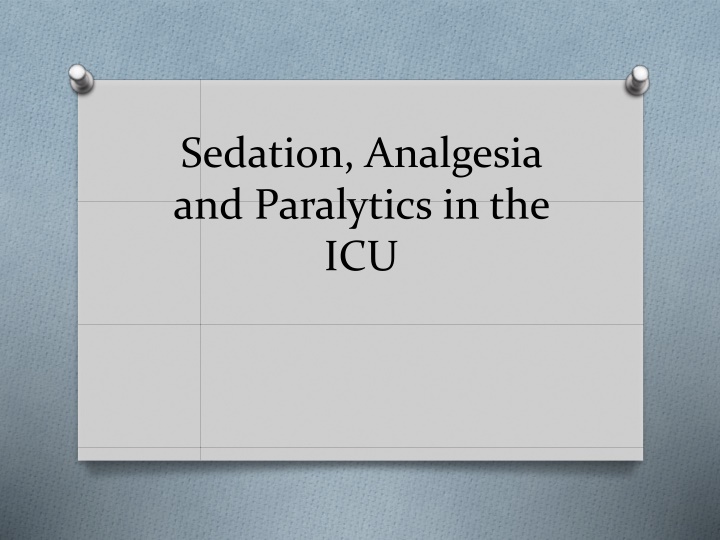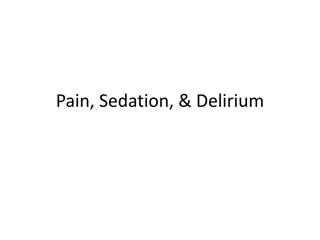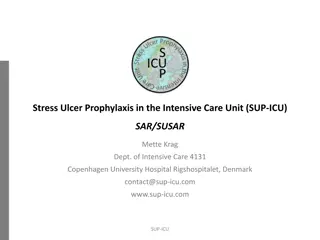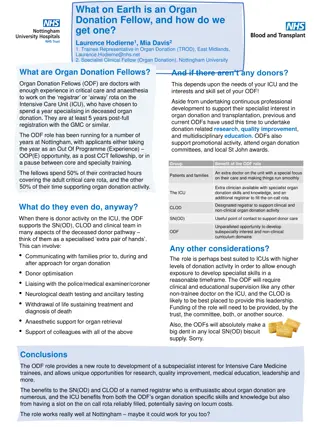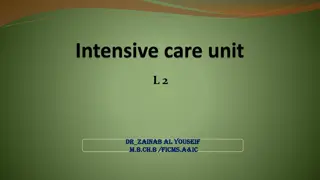Sedation, Analgesia, and Paralytics in the ICU: A Comprehensive Guide
This comprehensive guide delves into the use of sedatives, analgesics, and paralytics in the intensive care unit (ICU). It covers various medications like Etomidate, Propofol, Ketamine, Benzodiazepenes, and Dexmedetomidine, detailing their indications, dosages, and effects. Understanding the role of each type of medication is crucial for optimal patient care in the ICU setting.
Download Presentation

Please find below an Image/Link to download the presentation.
The content on the website is provided AS IS for your information and personal use only. It may not be sold, licensed, or shared on other websites without obtaining consent from the author.If you encounter any issues during the download, it is possible that the publisher has removed the file from their server.
You are allowed to download the files provided on this website for personal or commercial use, subject to the condition that they are used lawfully. All files are the property of their respective owners.
The content on the website is provided AS IS for your information and personal use only. It may not be sold, licensed, or shared on other websites without obtaining consent from the author.
E N D
Presentation Transcript
Sedation, Analgesia and Paralytics in the ICU
What is used for what? O Analgesic O Pain control O Always should be first before sedation O Sedative O Achieve sedation, anxiolysis, amnesia, altered consciousness O Paralytic O Prevents movement O Never should be used without analgesia and sedation
Sedatives O Etomidate O Propofol O Ketamine O Dexmedetomidine
Etomidate O Used mostly for Rapid Sequence Intubation (RSI) O GABA like effects O Minimal effect on BP; can lower ICP O Can reduce plasma cortisol levels O Hepatic metabolism; renally excreted O Dose 0.3mg/kg for RSI
Propofol O Anesthetic agent O Respiratory and CV depressant can drop BP by as much as 30% O Vasodilation and negative inotropic effect O PRIS O Dose is 1-1.5mg/kg for RSI O For ICU sedation: 5-50mcg/kg/min
Ketamine O Anesthetic and dissociative agent O Also has analgesic effect O Hepatic metabolism O Can cause laryngeal spasm, hypertension O Psychomimetic effects given with benzo O 1-2mg/kg for RSI O 5-15mcg/kg/min for sedations
Benzodiazepenes: GABA agonists Lorazepam Lorazepam Midazolam Midazolam O Better choice for elderly and hepatic/renal dysfunction O Propylene glycol diluent risk of metabolic acidosis O .01-.1 mg/kg/hr and 1- 2mg IVP O Has an active metabolite O .02-.2mg/kg/hr and 2-4mg IVP
Dexmedetomidine O Recommended first line sedative for intubated pts* O Central alpha-2 agonist O Hepatically metabolized O Renally excreted 95% unchanged O Dosed 0.2-1.4 mcg/kg/hr O Can cause bradycardia and hypotension O Does NOT cause respiratory depression O Has analgesic component
Analgesics O Always treat pain before giving sedation or paralytics O Not all patients requires analgesic infusion as PRN dosing can be just as effective O If able, evaluate your interventions to ensure pain level reduced
Analgesics Fentanyl Fentanyl Morphine Morphine O 80-100x more potent than morphine O Bolus: 1mcg/kg q5 minutes O Infusion 0.5- 3mcg/kg/hr O Can cause rigid chest, hypotension O Causes histamine release itching O Bolus .3mg/kg q10 minutes O Infusion: .015- 0.2mg/kg/hr
Analgesics Hydromorphone Hydromorphone Hydrocodone Hydrocodone O Oral/enteral formula O Usually combined with acetaminophen O 25mg hydrocodone = 10mg morphine O T 4 hours; duration 4-8 hours O 1.5mg hydromorphone = 15mg morphine O T1/22-3 hours; duration 4-5hours
Paralytics O Never use without analgesia and sedation O Used to facilitate intubation (rapid sequence intubation) O Also used in patients with severe pulmonary dysfunction on mechanical ventilation O Cisatricurium most commonly used for infusions
Assessing Degree of Paralysis: Train of Four O Goal of TOF usually 2 twitches About 80% receptors inactive) O 4 twitches = 0-75% of receptors blocked O Sites: Ulnar nerve, facial nerve, posterior tibial O Start at 10mA and increase until twitches seen O If no twitches seen, check different site
Paralytics O Succinylcholine O Vecuronium O Rocuronium O Cisatricurium
Succinylcholine O Only depolarizing NMB O Avoid in hyperkalemia, 24 hour post major burn, neuromuscular disease, patients with several days of ICU critical illness O Onset in 60 seconds and lasts around 5 minutes O 1-1.5mg/kg for RSI dosing
Rocuronium O Nondepolarizing O Onset about 90 seconds and last 30-40 minutes O Lasts longer in those with hepatic impairment O Dose is 0.6-1mg/kg O Effect is dose dependent
Vecuronium O Similar to rocuronium O Slower onset time (up to 4 minutes) O Lasts 40-60 minutes O 0.08-0.1mg-kg
Cisatricurium O Bolus: .15-.2mg/kg O Infusion: 1-10mcg/kg/min based on train- of-four O T1/2 about 20 minutes O Metabolism by Hoffman degredation
